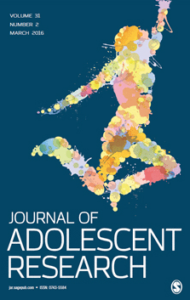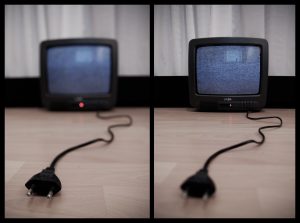By Lee Woods, a 3rd year student at the University of Virginia
This blog post is the third in a Media & Black Adolescents Series by youth analyzing movies that reflect the experiences and identity development of Black adolescents. For more posts, please visit our blog. Special thanks to Dr. Valerie Adams-Bass for her support of this series and the youth in her classes.
Highlights:
- Undergraduate students taking a “Media Socialization, Racial Stereotypes and Black Adolescent Identity” college course were asked to critique movies and television series, analyzing the media content and applying theory or research.
- This Media & Black Adolescents Series reflects on a spectrum of experiences for Black adolescents that are grounded in racial and media socialization reflected in the movies. These blogs address racial stereotypes as they relate to contemporary social issues and the identity development experiences of Black youth.
- For this third of five posts in the series, the youth writer reviews “Dope,” a movie about Malcolm, a high school senior and self-identified “geek.” Growing up in a rough neighborhood in Los Angeles, Malcolm’s dreams to break out and attend Harvard are complicated following a wild party and drug encounter.
Trailer for “Dope”
For parents or educators who may choose to use this movie as a teaching/learning tool, here are some possible discussion questions:
- How do you think Malcolm’s unique character impacts Black audience members? Is he harmful or helpful?
- Is Malcolm’s less stereotypical character enough to counteract the more stereotypical characters in the film?
Dope
The film Dope follows the story of a high school senior, Malcolm, and his best friends, as they navigate their way through school bullies and life in the rough parts of Inglewood, California. Malcolm, who is intelligent and charismatic, identifies as a 90s hip-hop geek, plays in a band, and has dreams of attending Harvard. However, his life becomes complicated when he meets Dom, a drug dealer who invites him to his birthday party at a club. Things quickly go south when the party is raided by the police and Dom frantically hides a gun and illegal drugs in Malcolm’s backpack. Chaos ensues when Malcolm discovers this at school, and is aggressively pursued for the drugs by Dom’s rivals.
Escaping the pursuit, Malcolm rushes to make his Harvard interview, only to encounter that his admissions interviewer, AJ, is the original owner of the drugs. Although Malcolm is eager to return them, AJ refuses and informs Malcolm that he must sell them and return the profit. Fearful for their lives and futures, Malcolm and his friends devise a plan to sell the drugs on the black market. Successful with the sales, Malcolm cleverly links the drug money to a Bitcoin account under AJ’s company name, putting AJ in a position where he must accept him into Harvard if he wants to obtain his earnings. The story comes to a close as the friends attend prom and Malcolm receives his Harvard acceptance letter.
Overall, I found Dope to be entertaining and comedic. I thoroughly enjoyed its nontraditional and suspenseful plot line. I found myself captivated as Malcolm’s character developed from an awkward teenager to a more confident young man. Additionally, the seamlessly integrated cultural references helped to drive the plot and add relevant, humorous tones.
Black Stereotypes
Throughout my viewing of the film, I could not help but to make connections to Ronald L. Jackson’s II Scripting the Black Masculine Body: Identity, Discourse, and Racial Politics in Popular Media, concepts of Blackness, and positive and negative Black stereotypes (Jackson, 2006; Allen & Thornton, 1992).
First and foremost, Dope relies heavily on its audience’s schemas surrounding race, while also challenging them. The film presents Malcolm and his friends as non-stereotypical Black characters that do “White people things”, such as playing in a band and getting good grades. Malcolm and his friends craft their identities by rejecting their assumed “Blackness” and adapting more individualistic personas. These untraditional portrayals surely help to defy racial stereotypes, but also present the main characters, specifically Malcolm, as more complex individuals that cannot be easily categorized.
Although Malcolm’s more positive and nontraditional portrayal helps to defy racial expectations, it comes at the cost of the less developed side characters who happen to reinforce negative stereotypes. Characters like Dom and other residents of Inglewood, are criminalized and stereotypically portrayed as violent drug dealers. In accordance with researchers Allen and Thornton’s (1992) ideas about positive and negative stereotypes in Black media images, Malcolm represents a positive depiction of a Black male with “ethical and moral insight”, while Dom and the other drug dealers are much more negative, with “tendencies towards dishonesty, laziness and hedonism” (Allen & Thornton, 1992).
Read more from this critique by downloading this PDF.
If you have any comments or questions about this post, please email Youth-Nex@virginia.edu. Please visit the Youth-Nex Homepage for up to date information about the work happening at the center.

Author Bio: Lee Woods is a third year student at the University of Virginia, originally from Roanoke, Virginia. She is studying Media Studies and Studio Art. She especially enjoys understanding and analyzing media in relation to social issues such as gender and race. In her free time she finds joy in painting, being in nature, and spending time with her cat.


















